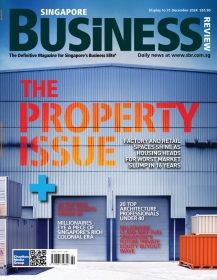
Prime office segment seen as the only bright spot in Singapore property sector
See which developer is poised to benefit.
According to Barclays, it holds a contrarian view and expect Singapore’s prime office sector to be the only bright spot in Singapore’s real estate sector, as prime rents bottomed in 1Q13 and it expects a cyclical upturn in rents and occupancy given the below- average annual supply of 0.85mn sqft during 2013-2016E.
Here's more:
We view CapitaCommercial Trust as a key beneficiary as: 1) it is still the most liquid prime office proxy; and 2) its 40%- JV CapitaGreen is the only prime Grade A office building to be completed during the window of end-2013 to end-2015.
This is a contrarian view as consensus still generally believes demand for prime office space from large occupiers and financial institutions is still weak, while we believe expectations are low and the below-average supply provides a window of upside.
Key downside risks to our positive view are: 1) a downturn in the global economy; 2) a sharp increase in risk-free long-end rates which would decrease the attractiveness of REITs; 3) lower-than-expected occupancy and rates signed at CapitaGreen; 4) cessation of the yield protection for One George Street on 10 July 2013, which has so far been partially mitigated by positive rent reversions in other properties.
Our downside case assumes a 200bps increase in interest rates and 20% drop in office rents which would bring our fair valuation to S$0.81. Conversely, our upside case assumes a 200bps decrease in interest rates and 20% upside in rents which results in a fair valuation of S$3.13.
Valuation Analysis CCT trades at an attractive 0.87x P/B (BV at end Sep-13) and 5.6-6.2% FY13- 15E yields, a 3.1-3.7% spread over the Singapore 10-year government bond yield of 2.5%, in line with its historical average spread of 2.5%.
These yields are lower than SREIT-weighted average yields of 5.8-6.6%. Our 12-month PT of S$1.87 is based on a DDM approach, using a cost of equity assumption of 6.9% and a terminal growth assumption of 2.0%.
























 Advertise
Advertise






